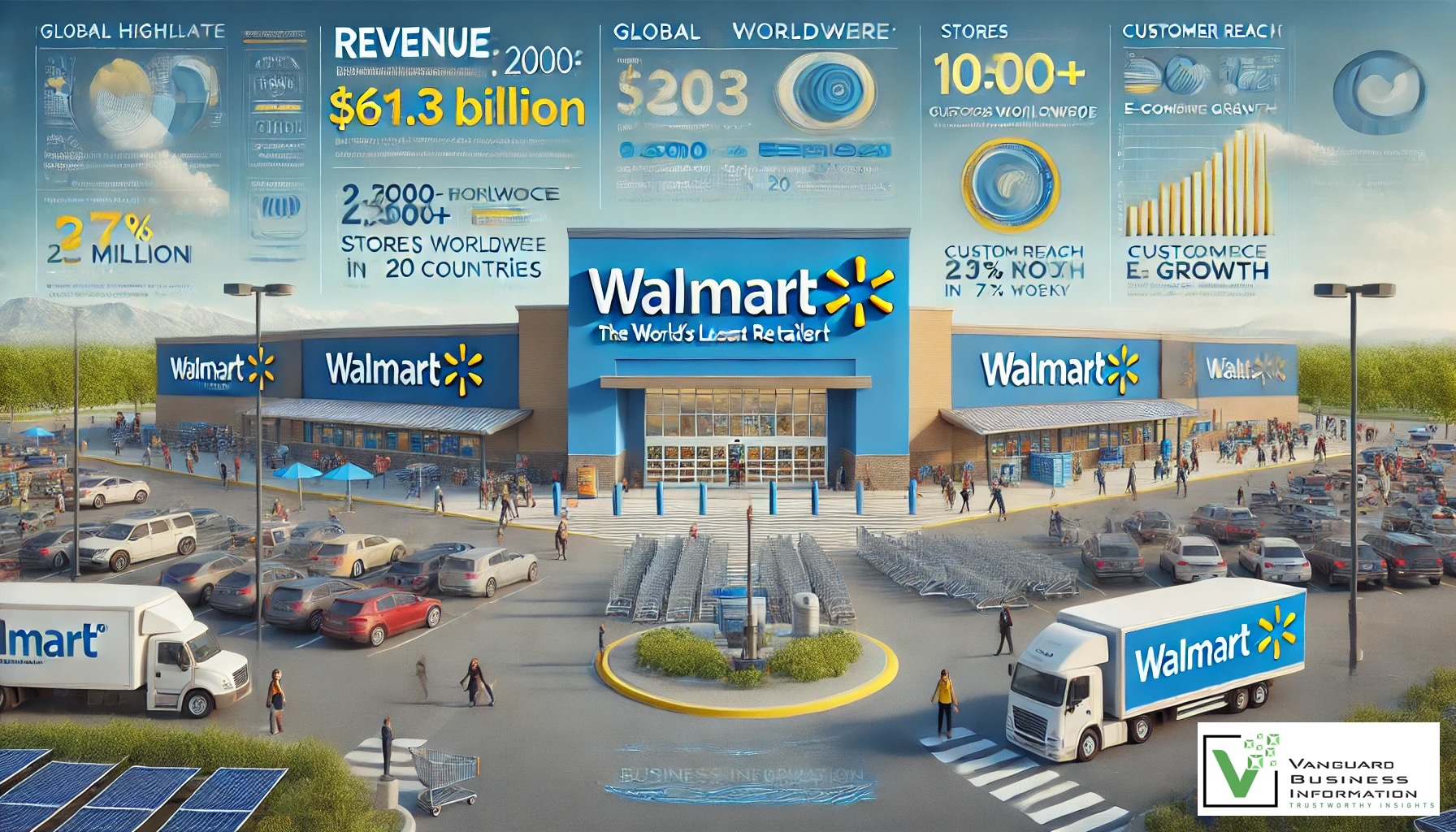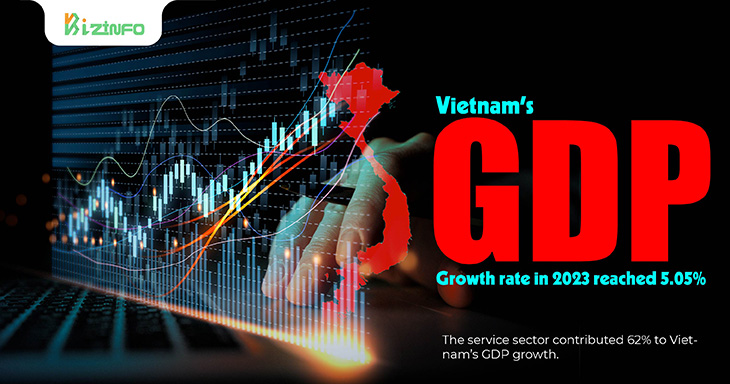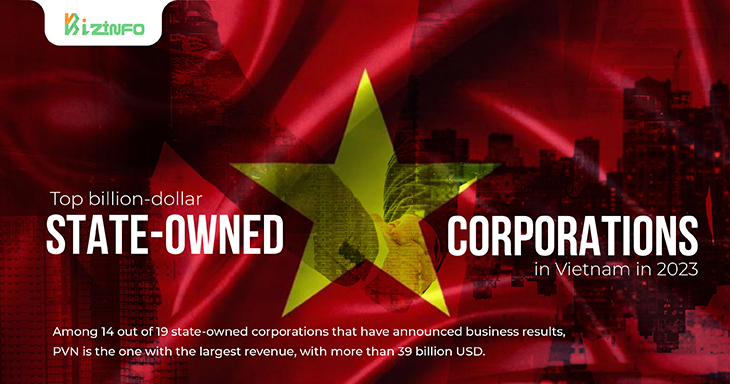Published Dec 2024
Walmart: The Giant at the Top of the Fortune Global 500
Walmart’s journey from a single store in Arkansas to a global retail empire is a testament to its unwavering commitment to affordability, innovation, and community. As the company continues to evolve, its impact on the global retail landscape will undoubtedly endure, solidifying its place at the top of the Fortune Global 500 for years to come.

For over a decade, Walmart has consistently held the crown as the world’s largest company by revenue. In 2023, Walmart once again topped the Fortune Global 500 list, reporting an astonishing $611.3 billion in sales. This feat underscores Walmart’s dominance in the retail sector and its unrivaled ability to adapt to changing market dynamics while serving millions of customers worldwide. But what makes Walmart such a powerhouse? Let’s dive into its story, strengths, and nuances that have propelled it to the top.
A Legacy of Affordable Excellence
Founded in 1962 by Sam Walton in Rogers, Arkansas, Walmart began with a simple mission: to provide affordable goods to everyday Americans. Over six decades, that mission has evolved into a global phenomenon. Walmart operates over 10,500 stores across 20 countries under various brand names, serving 230 million customers weekly.
What sets Walmart apart is its relentless focus on cost leadership. By leveraging economies of scale and efficient supply chain management, Walmart consistently offers lower prices than competitors. This affordability, coupled with an extensive product range, has made Walmart a household name across the globe.
The Power of Scale and Innovation
One of Walmart’s key strengths lies in its scale. As the world’s largest private employer, Walmart employs over 2.1 million associates, creating a vast operational network that ensures accessibility and convenience for its customers. But scale alone doesn’t guarantee success. Walmart’s ability to innovate and adapt has been equally crucial.
In recent years, Walmart has heavily invested in technology to enhance its operations and customer experience. From AI-powered inventory management to the introduction of Walmart+, a subscription service competing with Amazon Prime, the company has embraced digital transformation. Walmart Connect, its advertising business, leverages data insights to provide targeted marketing solutions, further diversifying its revenue streams.
Commitment to Sustainability and Community
Walmart is also making strides in corporate social responsibility. The company has committed to becoming a regenerative company by 2040, with goals such as achieving zero emissions in its global operations and transitioning to 100% renewable energy. Additionally, Walmart has pledged to support sustainable agriculture, aiming to improve the livelihoods of farmers while reducing environmental impact.
Walmart’s community focus extends beyond sustainability. Through its philanthropic arm, the Walmart Foundation, the company has donated billions of dollars to initiatives addressing hunger, disaster relief, and economic opportunity. This dual focus on profit and purpose has solidified Walmart’s reputation as a socially conscious leader.
Challenges and Nuances
While Walmart’s success is undeniable, the company faces its share of challenges. The rise of e-commerce giants like Amazon has intensified competition, forcing Walmart to continually innovate. Labor relations have also been a point of contention, with critics citing low wages and limited benefits for entry-level employees. Despite these criticisms, Walmart has made strides in raising its minimum wage and providing more comprehensive employee benefits in recent years.
Another nuanced aspect of Walmart’s operations is its localized approach. In international markets, Walmart adapts its business model to align with local preferences and regulatory environments. For example, in India, Walmart operates through partnerships with local entities to navigate the complex retail landscape. This adaptability has been instrumental in its global success.
Future Prospects
Looking ahead, Walmart’s future appears as robust as its past. The company is focusing on expanding its digital presence, with plans to grow its e-commerce platform and enhance its delivery capabilities. Walmart’s foray into health care, through services like Walmart Health and pharmacy offerings, signals diversification into new growth areas.
Moreover, Walmart’s emphasis on sustainability and technology positions it well for a future where consumers demand more transparency and convenience. By combining its traditional strengths with forward-thinking strategies, Walmart aims to maintain its leadership in the retail industry for years to come.
Conclusion
Walmart’s journey from a single store in Arkansas to a global retail empire is a testament to its unwavering commitment to affordability, innovation, and community. With a deep understanding of its customers’ needs and the agility to adapt to a rapidly changing world, Walmart remains a force to be reckoned with. As the company continues to evolve, its impact on the global retail landscape will undoubtedly endure, solidifying its place at the top of the Fortune Global 500 for years to come.
Appendices
Appendix A: Key Data and Statistics
- Revenue (2023): $611.3 billion
- Global Workforce: 2.1 million associates
- Stores Worldwide: Over 10,500 stores in 20 countries
- Customer Reach: 230 million customers weekly
- E-commerce Growth: 17% year-over-year growth in 2023
Appendix B: Sustainability Metrics
- Carbon Emissions Goal: Net zero by 2040
- Renewable Energy: 64% of operations powered by renewable energy as of 2023
- Waste Reduction: Diverted 78% of operational waste from landfills
Appendix C: Financial Insights
- Advertising Revenue (Walmart Connect): $2.7 billion in 2023
- Market Share in U.S. Grocery: 25% (leading position)
- Capital Investments: $15 billion in technology and logistics in 2023
Appendix D: Community and Philanthropy
- Charitable Contributions: Over $1.5 billion donated through Walmart Foundation
- Hunger Relief: Provided 7.5 billion meals since 2010
- Disaster Relief: $55 million in aid provided in 2023
Appendix E: Employee Benefits and Compensation
- Minimum Wage: Raised to $14 per hour in 2023
- Health Benefits: Comprehensive health insurance for 1.2 million employees
Educational Assistance: $1 billion invested in employee education programs since 2018















